Mark Morrison, Mireille Consalvey, Katrin Berkenbusch, and Emma Jones explain the economic importance of maintaining diverse and healthy coastal and deepsea habitats.
PDF of this article (234 KB)
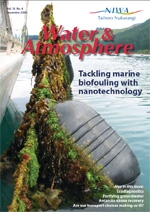
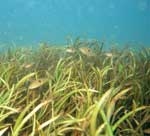

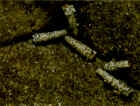

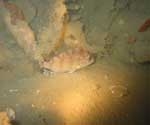
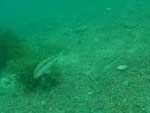
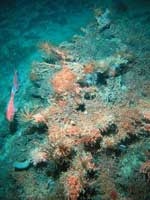
Some examples of fish–habitat associations
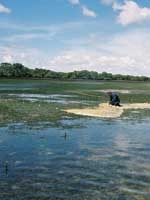

New Zealand’s marine environment supports a diverse and valuable range of fisheries: we harvest invertebrates and finfish from estuaries, coastal areas, the continental slope, seamounts, and beyond. While a lot of research goes into how many fish there are, their population dynamics (how fast they grow, how long they live), and integrating these data into stock-assessment models, we have far less understanding of how these commercial fish species interact with their habitats.
Just like terrestrial animals, fish depend on different habitats as they pass through different life stages. The types of habitats available, their quality, and their relative location, can affect how many fish survive through to the adult population. This, in turn, dictates how many can be sustainably harvested. For juvenile fish especially, there may be ‘habitat bottlenecks’, where the limited availability of especially important habitats may constrain fish production, and ‘habitat chains’, where fish use a sequence of habitats as they grow.
Biogenic habitats
Biogenic habitats are habitats created by plants and animals. This may be the organism itself, such as a seagrass meadow or a bed of horse mussels, or arise from an organism’s activities, such as the burrows created by crabs. Biogenic habitat-forming species also perform other important roles within the ecosystem and some are harvested in their own right.
Examples of biogenic habitat in New Zealand estuaries and shallow coastal areas include mangrove forests, seagrass meadows, green-lipped mussel and oyster reefs, sponge gardens, and kelp forests. Less widely recognised examples are horse mussel beds, bryozoan fields, maerl/rhodolith beds (red algae that form nodules of calcium carbonate), tubeworm mounds, dog cockle beds, and beds of Caulerpa, a green alga.
As a rule, all of these habitats may increase overall diversity, abundance, and productivity of a range of species that associate with them, including small fish. However, some have higher ‘values’ than others, depending on how well they provide for the needs of associated species. For example, juvenile fish tend to congregate more densely in subtidal seagrass meadows than over horse mussel beds, though both habitats play important nursery roles.
The best known biogenic habitat-forming species in the deep sea are the coldwater corals, which grow on hard surfaces such as seamounts. Coldwater corals may well be the most complex three-dimensional structure in the deep sea, but their function as habitat for other organisms is often anecdotal or only inferred from photographs and videos. However, we know that some fish species congregate on seamounts, and, in New Zealand waters, seamounts support fisheries for orange roughy, black and smooth oreo, black cardinal fish, alfonsino, bluenose, and rubyfish.
The orange roughy fishery tends to be the poster child for seamounts. The New Zealand orange roughy fishery is one of the biggest and most persistent deepsea fisheries in the world, yet we don’t know for sure where the juvenile fish are found, or how important biogenic habitats might be for their growth and survival.
Such large information gaps extend across most of New Zealand’s marine environment, both in terms of what species associate with different biogenic habitats (especially during their juvenile stages), and where and how extensively these habitats occur. Very little is known about the importance of specific habitats to deepsea fish. And even for common coastal species that support large fisheries, our knowledge is scant and fragmented (but see ‘Tracking snapper origins’ for a recent advance).
Stressors and threats to biogenic habitats
Human activities, both on land and in the sea, may result in damage to biogenic habitats and the fish they support, reducing overall productivity and fisheries yield. Such stressors do not operate independently from each other, and may be synergistic in their effects.
The main land-based stressors are thought to be sedimentation and, to a lesser extent, eutrophication, arising from excessive nutrient run-off. Changes in freshwater flow to the sea, following large-scale water extraction, may also be important in some coastal regions. Several ‘mechanisms of impact’ may be operating:
- Suspended sediment adversely affects filter-feeding animals that form biogenic habitat; these include horse mussels, green-lipped mussels, oysters, bryozoans,and sponges.
- Reduced light levels through increased water turbidity and direct smothering compromise photosynthesis in plants such as seagrass, kelps/seaweeds, and maerl/rhodoliths.
- Changes in the physical properties of the seafloor itself, such as increased ‘muddiness’, make it difficult for larvae of these species to settle and survive through to their adult forms.
With climate change projected to increase both the frequency and intensity of storms and rainfall events in some places, and with intensification of land use, the role of these stressors is likely to increase.
Marine activities that can affect such habitats include fishing, dredging (including the sediment plumes that result), and aquaculture operations. Broadly speaking, as we move away from the continental shelf and into deeper waters, the relative impacts of land-based activities diminish, and marine-based impacts on biogenic habitats rise. In deepsea areas, fauna such as corals can be slow-growing and long-lived, with low natural mortality rates and limited larval dispersal. These factors make such biogenic habitats susceptible to marine-based stressors and impacts, with very slow recovery times.
The way forward
We’re reviewing what we know about the importance of biogenic habitats to fisheries productivity, working on an information review for the Ministry of Fisheries. The review’s scope extends from mangrove forests in the intertidal zone out to habitats such as coldwater corals on seamounts. Additionally, a new three-year, field-based research programme will assess the importance of biogenic habitats on the continental shelf (at about 5–200 m water depth). For this programme we’ll combine fisher and researcher interviews around New Zealand to capture knowledge gained from many years at sea, followed by targeted sampling using multi-beam scanning technology to map hotspots of biogenic habitat. Night-time sampling with NIWA’s deep-towed imaging system (DTIS) will help quantify what fish species are associated with these habitats, especially juvenile phases.
As the findings of these different programmes become available and are integrated into management systems, they will help resource users and managers strike a better balance between resource extraction and ecosystem integrity and resilience. Ultimately, this will help maintain healthy and productive fisheries, underpinned by healthy and productive ecosystems.
Preserving productive fisheries
- Biogenic habitats – those formed by plants and animals – are essential for different life stages of commercial fish species.
- Many biogenic habitats are threatened by the effects of land development, pollution, and certain fishing practices.
- Research programmes are extending our understanding of how these habitats support commercial fisheries.
Fisheries ecologists Dr Mark Morrison and Dr Emma Jones are based at NIWA in Auckland. Dr Mireille Consalvey is a seamount scientist at NIWA in Wellington. Dr Katrin Berkenbusch is a marine ecologist based at the University of Otago, Dunedin.
The authors are grateful for funding from the Foundation for Research, Science and Technology, Ministry of Fisheries, Biodiversity Fund, Auckland Regional Council, and Department of Conservation. They also thank the many individuals, both within and outside of NIWA, who have contributed to the field work and processing of many samples.
Teachers’ resource for NCEA Achievement Standards or Unit Standards: Biology Level 2 US6309, Level 3 AS90713 Chemistry Level 3 US6340 Environmental Sustainability Level 2 AS90814
